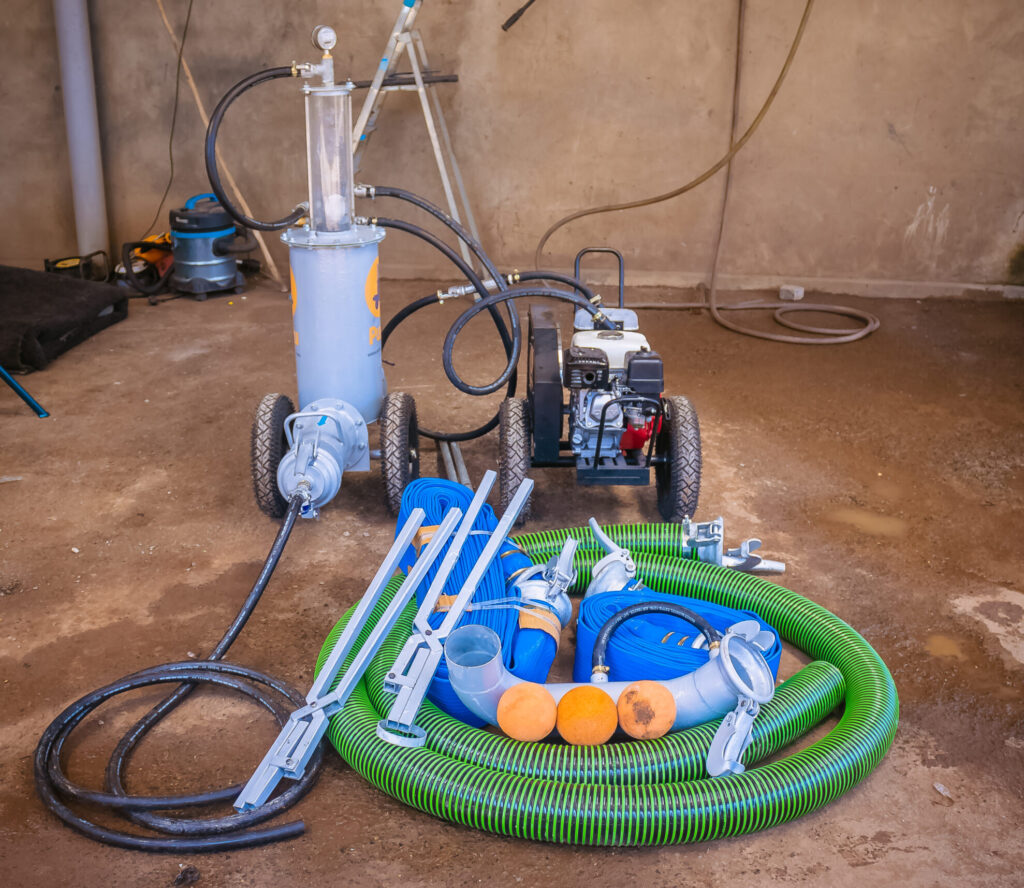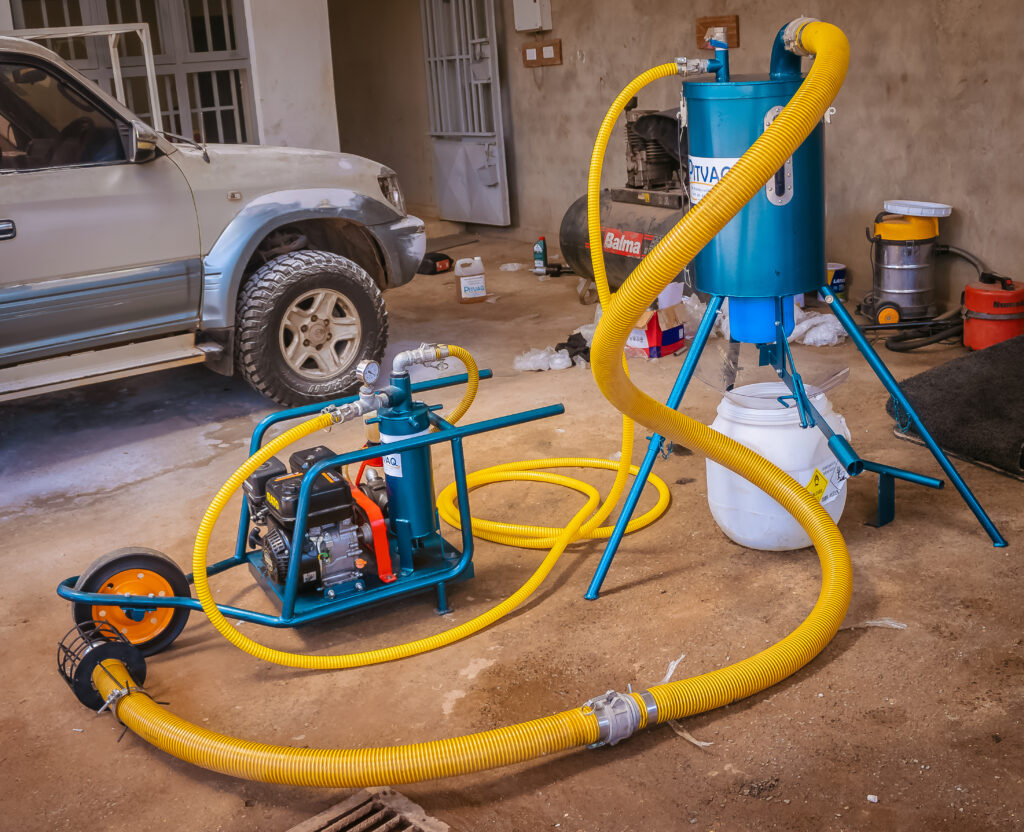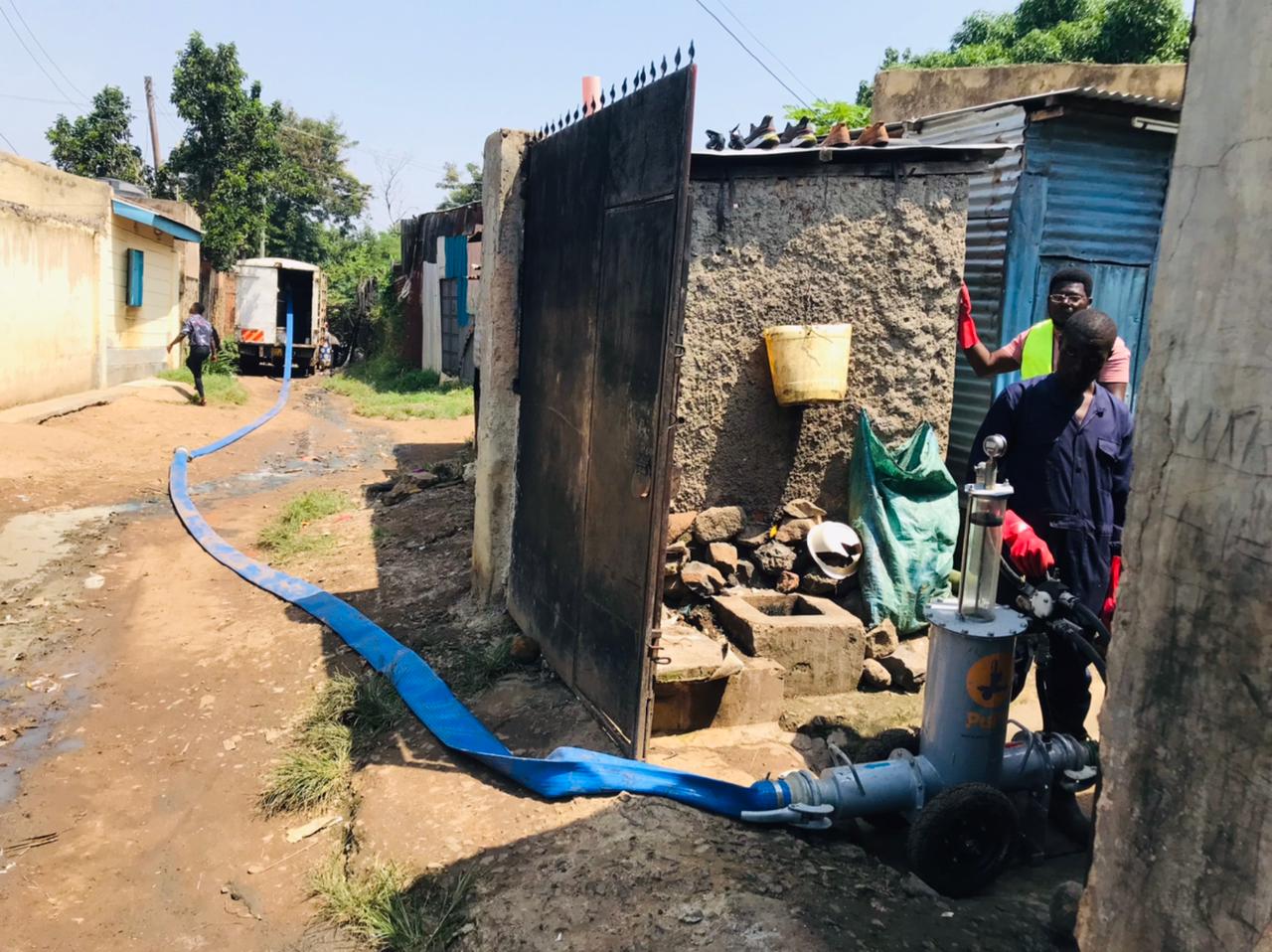How do we safely empty pit latrines?
In Sub-Saharan Africa, over 120 million households rely on onsite sanitation facilities—and every one of them will eventually fill.
In Sub-Saharan Africa alone, more than 120 million households depend on onsite sanitation facilities, and each one will eventually fill (Greene et al., 2021). This makes the question of how to safely empty them central to achieving safely managed sanitation.
I’ve spent more time than I’d care to admit thinking about this problem over my career. Through the FSM Action Research project, I finally have a chance to put some of those ideas to the test and, hopefully, move us a step closer to real solutions.
Pit latrines are complicated
Safe emptying is not about one perfect technology—it’s about matching the right approach to the right context.
Pit latrines are incredibly diverse. Asking “how do we safely empty a pit?” is a bit like asking “what’s the right car to buy?” It depends entirely on the situation. Choosing a car requires knowing the terrain, how many people it must carry, the buyer’s budget, available fuel, and whether repair services are nearby. Similarly, to design a safe emptying service we need to know: Is the pit in a rural or urban area? Is it accessible by road, even during the rainy season? Is it lined or unlined? How deep is it? What’s the sludge consistency? How much will households pay? Are there regulations in place? Is there a functioning treatment plant nearby? And the dreaded question: is it used as a trash can?
I’ve seen a wide variety of pits in my life: from the 6m3 monsters of Kisumu that serve 20 people in a compound; to the shallow pits of Lusaka which risk contaminating the nearby groundwater used for drinking; to the deep narrow pits in Rwanda which I’m quite sure reach the center of the earth. These require very different solutions.
In short: no one technology or service model will fit all.


Can it even be emptied?
Before we ask whether pits can be emptied safely, we need to ask if they can be emptied at all. In earlier research I completed with Triangle Environmental and NC State University (Greene et al., 2021), we estimated that in Sub-Saharan Africa:
- 44% of onsite facilities cannot be emptied at all due to collapse risk, poor construction, or inaccessibility;
- 40% could be emptied manually, but not mechanically; and
- Only 16% could be emptied using mechanized technologies, if services are available.
Many pits are simply not built in a way that enables what we might traditionally think of as ‘safe emptying’.
If we define “safe” as mechanized emptying, then less than one in five households can be served. That leaves the majority dependent on manual practices and suggests that we need to find a way to make manual emptying safe too if we want to serve the wider population.
Of course, the alternative is to build much better toilets that can be emptied. I have spent a career working in pit emptying; but believe me; I also know that building new toilets is the true solution. However, investing in sub-structures is expensive and a rarity. The Lusaka Sanitation Programme did invest in sanitation facilities, and our team’s early research suggests that these are comparatively a dream to empty. These improved toilets will contribute to an improved sanitation future for Lusaka.
The true long-term solution is building better toilets—but until then, safe emptying innovations remain essential
Does it need to be emptied?
I’m sure most people with a full pit would prefer it was emptied so they could keep using it; but it’s not always essential. In some rural areas, pits take 15–20 years to fill. In these cases, households often retire them permanently, backfilling and sometimes planting a banana tree above. This can be entirely practical—where groundwater is safe and space is available. These pits do not need to emptied and it’s often not practical to do so.
In my opinion, the circumstances where a pit does truly need to emptied:
In my view, pits truly require emptying in three cases:
- Where there is a risk of groundwater contamination,
- Where dense urban settlements leave no room to rebuild, and
- Where institutions such as schools or hospitals face blocks of toilets filling at once, leaving vulnerable populations without facilities.
With Africa’s incredible rate of urbanization and population growth, the demand will grow and the health and environmental risks will become more severe – of that I am sure.
How do we safely empty pit latrines?
The honest answer is: we don’t know yet. But what we do know is that not all pits are the same, not all can be emptied, and not all should be emptied.
To begin answering this question, the FSM Action Research project will empty 160 pits each in Lusaka, Kigali, Kampala, and Kisumu during 2025/26. We will test a range of technologies and approaches, conduct time-and-motion studies on efficiency, assess worker health and safety risks, and analyze the financial returns of different models.
Our goal is not to crown one “best” technology, but to understand which approaches work in which contexts—and how they can be scaled.
In future articles, I’ll share what we’re learning: the technologies being tested, the partners involved, and the early data emerging. The takeaway is simple: safely managed sanitation requires multiple approaches, each matched to context, and reinforced by supportive policy and investment. But you already knew that….!
More information: For a detailed breakdown of pit latrine emptiability across six global regions, see Greene et al. (2021), “The role of emptying services in provision of safely managed sanitation: A classification and quantification of the needs of LMICs” (Journal of Environmental Management, Vol. 290). The paper quantifies which facilities can be emptied via mechanized or manual means, and which are effectively unemptiable, providing a foundation for much of the analysis shared here. Special thank to Sarah Hennessy from Tri-EHI for data support

NICOLA GREENE
Director
Opero Services (Kisumu, Kenya)




